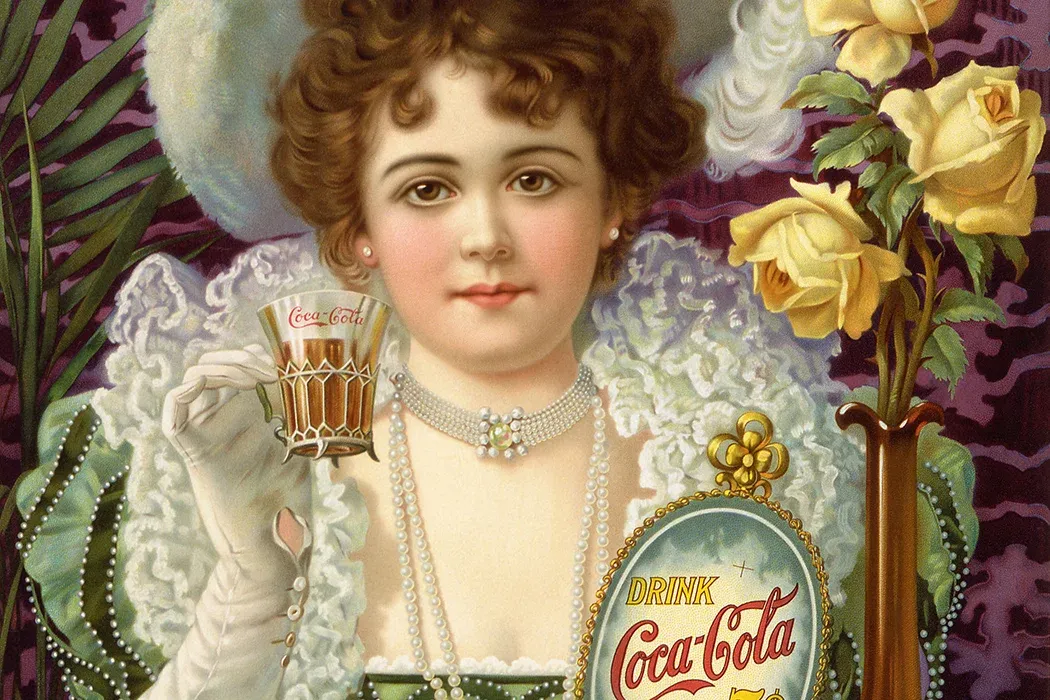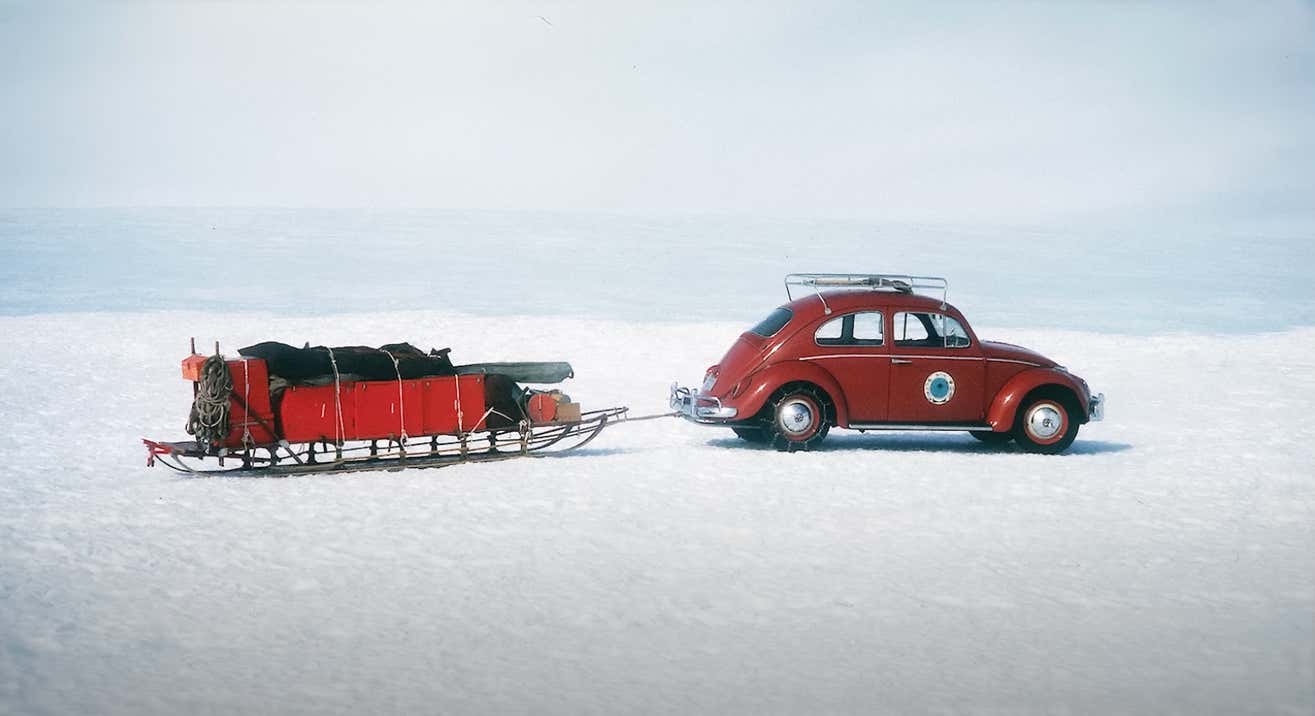Here's why Coca-Cola decided to take the cocaine out

From JSTOR Daily: "Coke was the brainchild of Dr. John Stith Pemberton, who was injured while fighting for the Confederacy and then became addicted to the morphine prescribed for pain relief. Living in Atlanta after the war, the physician tried the new wonder drug cocaine and found it cured his morphine problem. In 1884, Pemberton began selling cocaine-laced wine. After Atlanta passed a temperance law the next year, he switched gears and started producing a soft drink named for its two key medicinal ingredients—coca leaf and the caffeine-containing African kola nut. But within just a decade, public attitudes regarding cocaine changed dramatically. Black laborers in the New Orleans area began using cocaine, and it became a popular recreational drug in Black neighborhoods. Medical journals warned of the “Negro cocaine menace,” and newspapers claimed that the drug caused Black men to commit crimes."
The incredible saga of the lost Antarctic Volkswagen Beetles

From Jalopnik: "Normally, when planning an expedition to Antarctica, you might look for a beefy vehicle for wandering the great wasteland of snow and ice. Something like the building-size Antarctic Snow Cruiser, or the tough Soviet-made Kharkovchanka. You’d probably overlook, say, a 1960s Volkswagen Beetle. Rookie mistake! You’re going to end up like Australian explorer Douglas Mawson overlooking the hard-working People’s Car little car like that. Through a wonderful combination of timing, science and marketing, several Volkswagens made their way to Antarctica via Australian researchers in the 1960s. And, as it turns out, the humble little Beetle was damn useful for getting around. The first VW to end up in the Antarctic was stock, with just basic winterization thrown in to handle the incredible temperatures in the Antarctic. Volkswagen worked directly with Antarctic researchers to develop a better, more resilient vehicle for use around the base, which would arrive the very next year."
Florence Lawrence was the first movie star

From Messy Nessy Chic: "it’s the early 1900s, the silent film era is still just finding its feet, and movie stars are as mythical as unicorns. Enter Florence Lawrence, the “first movie star”, who is about to embark on an epic career, spending the next three decades appearing in almost 300 films. Up until this point, no Hollywood actor has ever had their name splashed across the silver screen; they were merely faces in the flickering frames, credited only as “The Biograph Girl” or “The Vitagraph Girl”, after the film studios they worked for. But Florence, with her trailblazing charm, would change all that, and behind the scenes, she didn’t just sit around looking pretty. In her spare time, she had a surprising list of patents, including the first “auto signaling arm," which alone should have earned her a notable chapter in the annals of history."
(Editor's note: If you like this newsletter, please share it with someone else. And if you really like it, perhaps you could subscribe, or contribute something via my Patreon. Thanks for being a reader!)
What happens when a bird with a GPS tracker gets caught in a massive typhoon

From TYWKIWDBI: "A GPS-equipped streaked shearwater was apparently caught in a huge typhoon, showing swirling flight high over the mainland of Japan. It finally came through without landfalls when the typhoon returned to the sea......the overall direction of the bird's movement overlapped the path of the typhoon, with a sequence of five anticlockwise circles 50–80 km in diameter. While swirling, the movement speed of the bird was between 80 and 170 km h−1, with a GPS-based altitude record of up to 4700 m. These speeds and altitudes were much higher than those recorded during regular flights (flight speed: 10–60 km h−1, altitude: <100 m.. It remains unknown whether the bird could not or chose not to escape from the typhoon; once caught in the storm and displaced toward land, it might have been safer to stay within the storm rather than to resist it until it returned to the ocean with reduced wind speeds."
We can reconstruct Lewis & Clark's route because they took mercury laxatives
/https://tf-cmsv2-smithsonianmag-media.s3.amazonaws.com/filer/ed/ab/edab70e0-2aec-4555-b4e9-15c5562733e8/detail_lewis__clark_at_three_forks.jpg)
From the Smithsonian: "The epic venture undertaken by Meriwether Lewis and William Clark to find a passage from the Missouri River to the Pacific left Camp Dubois in Missouri on May 14, 1804, and reached the end 28 months later. To trace that historical journey, experts rely not only on the expedition journals and maps, but also signs of the more than 30-person group’s passage that persisted over the centuries. Specifically, latrines. Lewis and Clark and their team stopped at more than 600 sites, according to their journals, and each would have had pits dug to hold their waste. And it turns out that the expedition was well-equipped with the best medicines of the day, which gave each of those latrines a unique mercury-laden signature. The journals mention their men taking a popular remedy called Dr. Rush’s Bilious Pill—a fast-acting purgative."
The poet William Carlos Williams was also a doctor who delivered thousands of babies

From Poets.org: "Though one high school English teacher discovered Williams’s writing talent from an early age, Williams’s mother had decided that he would study science and take up medicine like his namesake, her brother Carlos. Williams studied medicine at the University of Pennsylvania, continuing his medical training in New York City after graduation. He then studied pediatric medicine in Germany. In 1910, Williams obtained his license and started his medical practice. He later added a room onto his house in Rutherford, New Jersey, for his medical office and specialized in treating children. Williams became a beloved hometown doctor, treating patients for free if they could not afford to pay (as he practiced during the Depression Era). He’s known for having delivered about 3,000 babies in Rutherford."
Author C.S. Lewis had a sword fight with a student after a literary argument
Did you know that C.S. Lewis had a sword fight with a student over a disagreement about Matthew Arnold ⚔️ pic.twitter.com/sOWw8Jgtt8
— Istra of Glome (@tillwehvfaces) June 4, 2024
Acknowledgements: I find a lot of these links myself, but I also get some from other newsletters that I rely on as "serendipity engines," such as The Morning News from Rosecrans Baldwin and Andrew Womack, Jodi Ettenberg's Curious About Everything, Dan Lewis's Now I Know, Robert Cottrell and Caroline Crampton's The Browser, Clive Thompson's Linkfest, Noah Brier and Colin Nagy's Why Is This Interesting, Maria Popova's The Marginalian, Sheehan Quirke AKA The Cultural Tutor, the Smithsonian magazine, and JSTOR Daily. If you come across something interesting that you think should be included here, please feel free to email me at mathew @ mathewingram dot com



